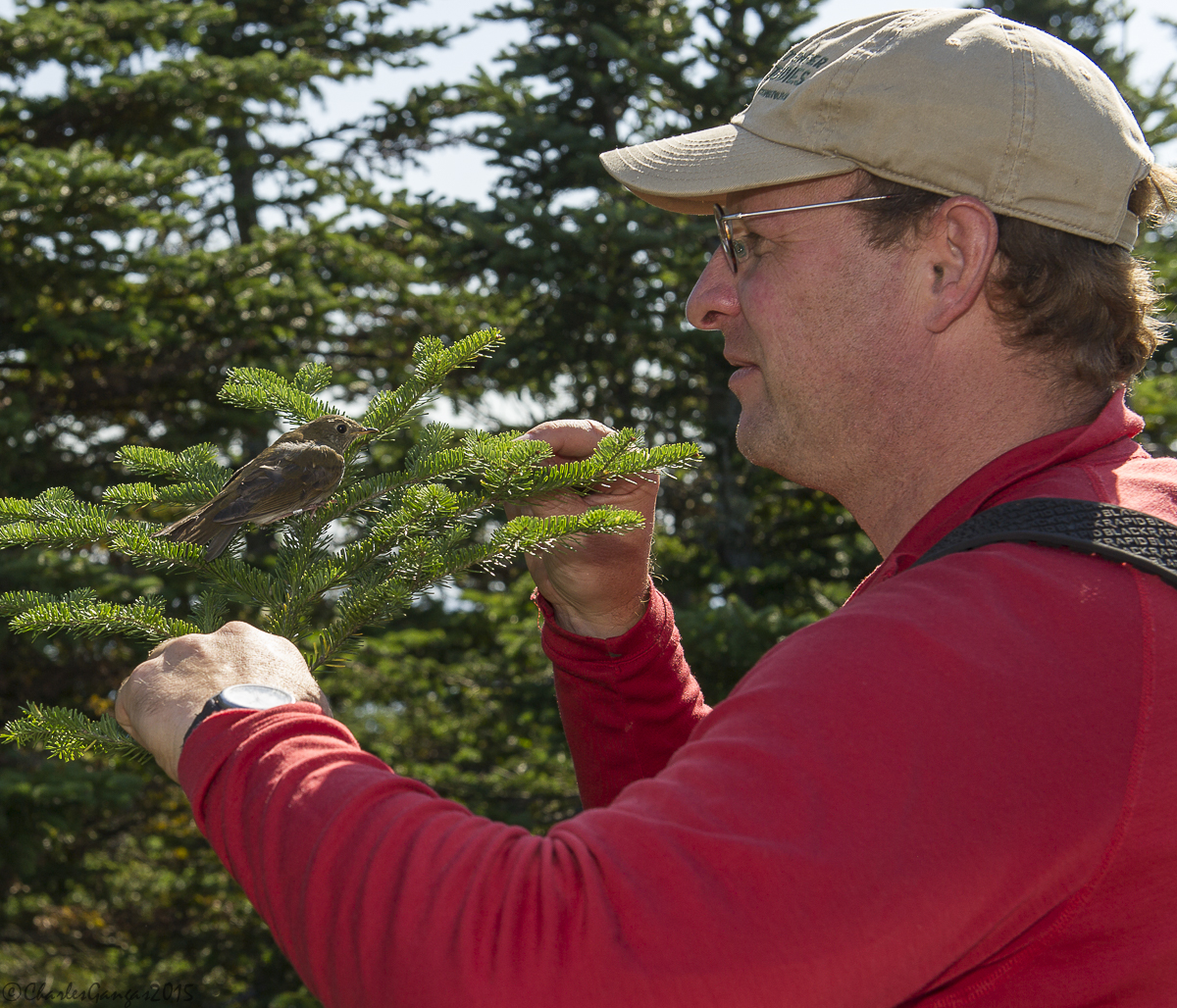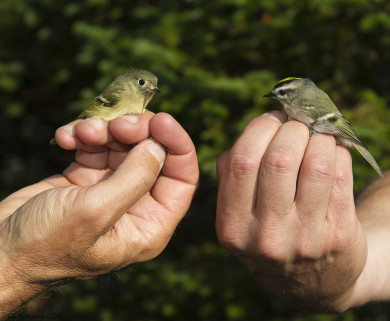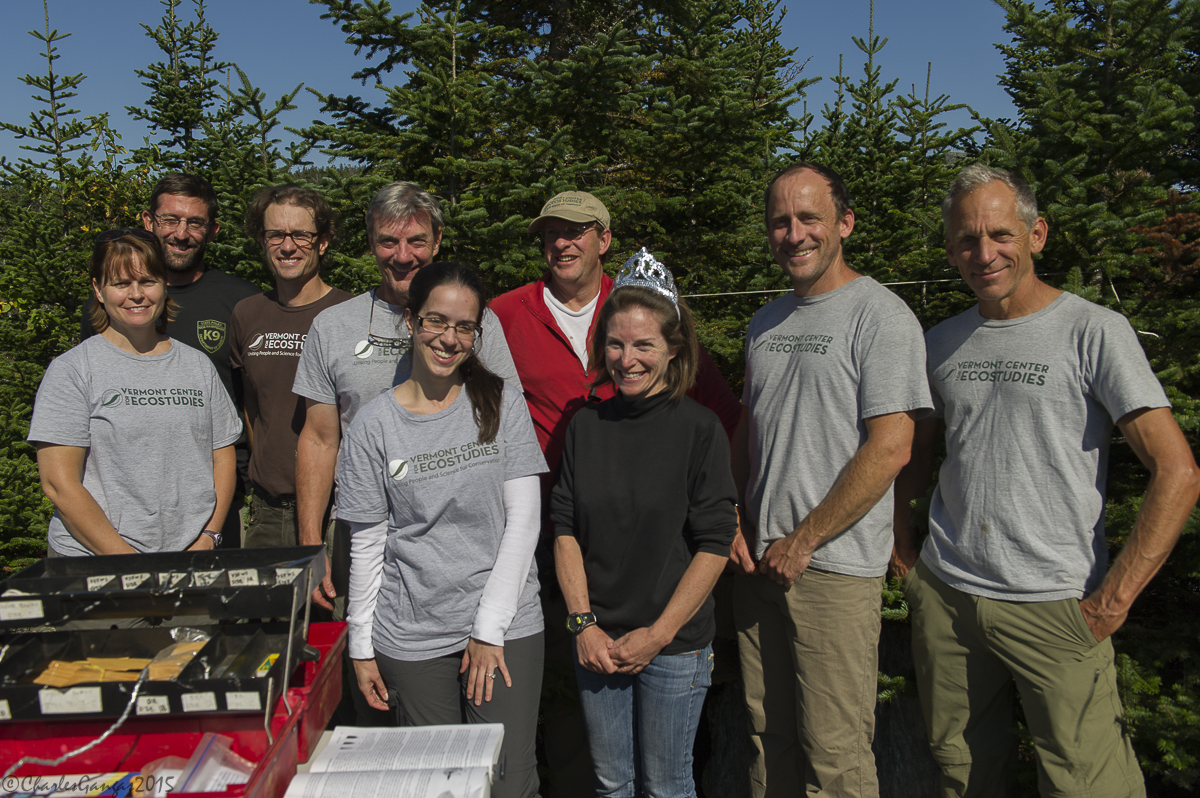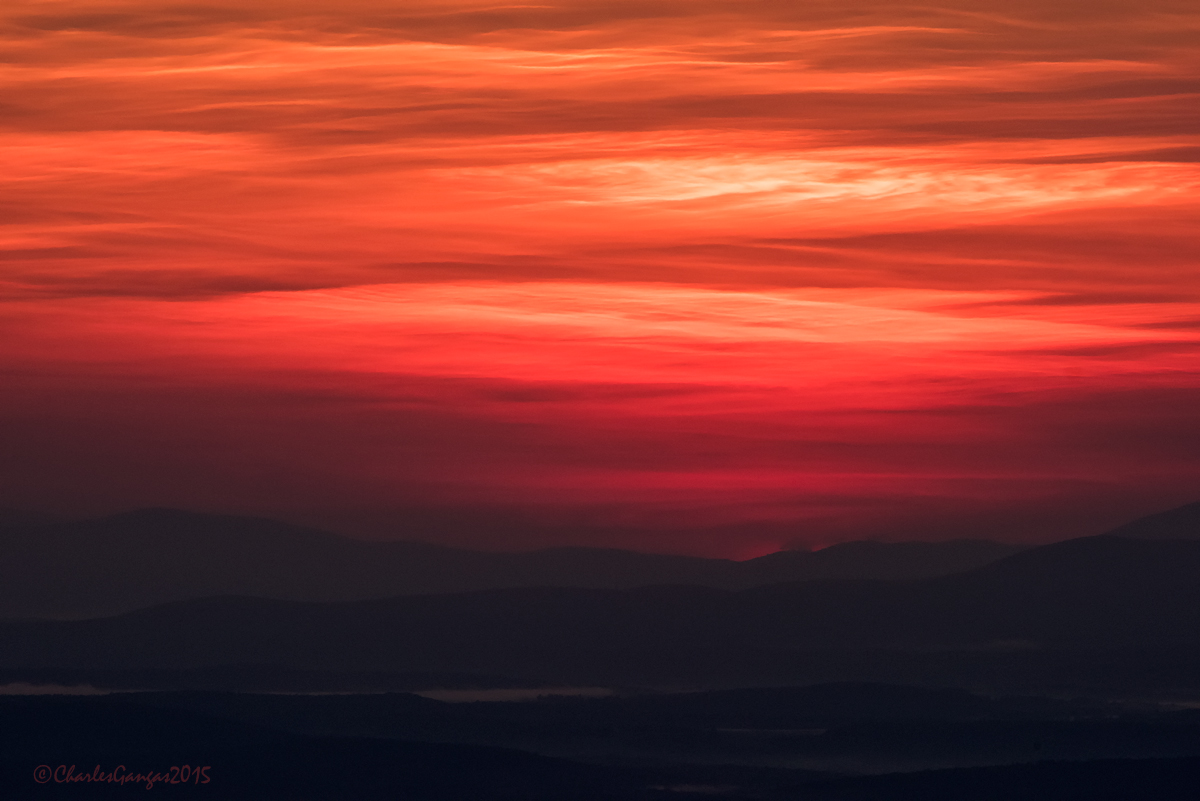The VCE crew made its final 2015 foray to Mansfield’s ridgeline on the evening of 15 September, hoping to intercept some passage migrants and hear the Bicknell’s Thrush (BITH) parting chorus. The trip was a success on both counts. We left the Stowe Valley’s stifling heat and arrived at our study site – the toll road uppermost parking lot – at ~5 pm, where cooler temperatures and a surprisingly brisk west wind greeted us. We scurried about setting mist nets and had 23 open by 6:30. In typical mid-September fashion, BITH put on a solid show at dusk, as 18-20 birds vocalized energetically over 15-20 minutes. We even heard a brief snatch of song from one individual. Among the 10 birds we captured before closing nets as darkness fell, the most surprising by far was a male Wilson’s Warbler, the first we have ever encountered in 24 years on Mansfield, even during our three autumns of banding on the ridgeline from 1995-97. We also captured 3 BITH, one an adult male we had banded in mid-July, and two young-of-the-year.
The season’s reduced daylength afforded us an opportunity to sleep in, and we reopened our nets at the leisurely hour of 5:30 am. Again, BITH vocalized with nearly the same vigor as they had in July, though only calls were heard, from the same (presumably) 18-20 birds. Why BITH undergo this annual resurgence of calling just prior to their southward departure (most will be gone by 1 October) is anyone’s guess. For a species that doesn’t hold true breeding territories, there would seem to be little imperative to restake claim to any turf, in hopes of reoccupying it next spring. Both male and female adult BITH return to Mansfield at relatively high rates, so there may be a social context/message embedded in their communication that we humans can’t decipher. Other songbirds are known to resume limited vocalizing (usually song) in fall, but we’re not aware of any that do so to the same extent as BITH. Hormones are likely involved, perhaps triggered by daylength. Whatever the cause/reason, it’s a delight to hear, when all other species are virtually silent! Birds continued to call sporadically throughout the morning, some quite insistently.
One mist-netted thrush became quite friendly with Kent McFarland as he attempted to stage some “natural” photos – we weren’t sure who was more intrigued with whom…

Kent McFarland shares an intimate moment with a banded Bicknell’s Thrush. Photo courtesy of Chuck Gangas.
Overall, we captured 82 birds in our nets. In order of numerical abundance, they included:

Mist-netted female Ruby-crowned (left) and Golden-crowned (right) kinglets, Mt. Mansfield. Photo courtesy of Chuck Gangas.
Yellow-rumped Warbler – 29 (all new)
Bicknell’s Thrush – 15 (10 new birds [7 young, 3 adults] and 5 recaptures [4 adults from earlier in the summer, 1 individual banded as an adult on 12 Sept 2011 and not encountered since!])
Black-throated Blue Warbler – 13 (all immatures. This species was by far the most abundant non-locally breeding species during our mid-1990s autumn banding study. Of the 338 individuals we banded during those 3 years, 328 [97%] were immatures, and not a single one was ever recaptured on site. We believe montane forests are an important habitat for post-fledging dispersal of Black-throated Blue Warblers, but the fact that birds appear to depart rapidly after arrival is puzzling. If your interest is piqued to learn more, check out our 2000 paper in the Wilson Bulletin.)
Golden-crowned Kinglet – 5
White-throated Sparrow – 4 (including 3 recaptures of adults from June-July)
Dark-eyed Junco – 4
Ruby-crowned Kinglet – 2
Blackpoll Warbler – 2
Red-breasted Nuthatch – 1
Brown Creeper – 1
Swainson’s Thrush – 1
Ovenbird – 1
Nashville Warbler – 1
Magnolia Warbler – 1
Black-throated Green Warbler – 1
Wilson’s Warbler – 1

The VCE crew at our banding table on Mt. Mansfield, with birthday girl Sara Zahendra, aka ‘Queen Bee’, presiding. Photo courtesy of Chuck Gangas.
VCE’s annual mid-September visit to Mansfield is as much a staff outing as it is our final field session of the year. We relish the chance to spend time together outside the office, both bantering and carefully examining fall warbler plumages (not mutually exclusive activities), as we also gain important insights about local bird population dynamics. We’ll be back on the ridgeline in early June of 2016 to launch our 25th consecutive year of field work. Until then, safe journeys to the migrants, and thanks to all those who supported this year’s work in so many ways!

